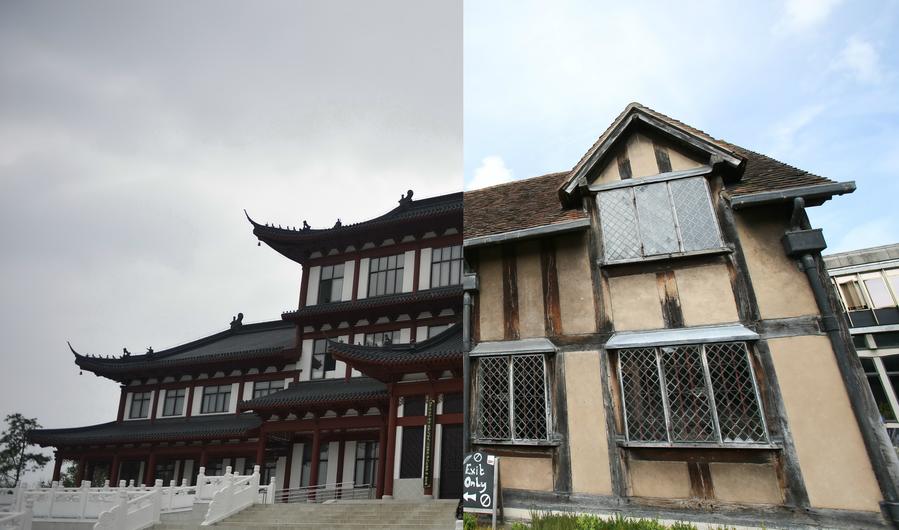







 |
|
Combination photo taken on Oct 12, 2016 by Zhou Mi (L) shows the commemorative museum of Chinese playwright Tang Xianzu in Fuzhou of East China's Jiangxi province and taken on July 21, 2016 by Han Yan (R) shows the former residence of British writer William Shakespeare in Stratford-upon-Avon, Britain. [Photo/Xinhua] |
UP AND DOWN IN CHINA
Tang was born in 1550 during the Ming Dynasty (1368-1644), a period where he saw much corruption and restrictions on women. His masterpiece, the "Peony Pavilion," tells of a romance between an official's daughter and a poor scholar, as they pursued love and freedom.
In the 1950s, the local government constructed a building close to Tang's tomb and named it after "Peony Pavilion," but it was destroyed during the Cultural Revolution (1966-76).
Much Chinese culture was under threat at this time, but Tang Tingshui, a 13th generation descendant of the playwright, managed to preserve the book of his family tree by burying it in cattle dung.
The study of Shakespeare in China was almost halted during the same period.
Shakespeare's name first appeared in Chinese books in 1839. Scholar Zhu Shenghao was the first Chinese translator of Shakespeare's 31 plays, before he died in 1944, and the complete works of Shakespeare in Chinese was published in 1978.
Today Shakespeare is arguably the most influential western playwright in China, and an excerpt from "The Merchant of Venice" is used in middle school textbooks today.